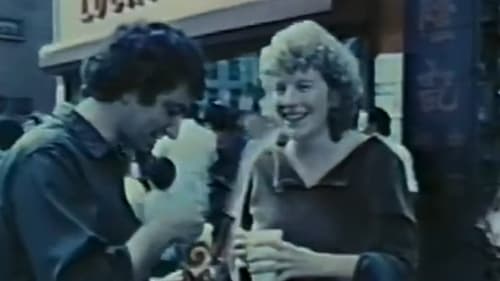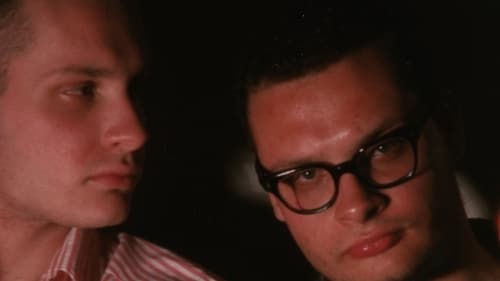Tom Chomont
略歴
Tom Chomont was a prominent figure of the New York underground film world, and made films for over 40 years. Tom Chomont was a longtime HIV and Parkinson’s Disease survivor and sadly died on June 28, 2010.
“Tom Chomont’s films are at once highly poetic and carefully controlled personal statements, and so private both in form and subject matter that they become almost hermetic…the instability of human existence, the poles of all -encompassing imagination on the one hand and nothingness and death on the other, are the notions underlying these works.” – Fred Camper
From 1962 through 1989, Tom Chomont made over 40 films. All but two of his films are silent and all are short, ranging from less than 1 minute to 16 minutes. Perhaps, the subtitle of his film Phases of the Moon best characterizes his film work: The Parapsychology of Everyday Life. His films, often portraits of friends, are a lyric evocation of the ordinary world, but at the same time they bear witness to an unabashedly spiritual and sexual parallel universe. His incomparable technique of offsetting color positive and high contrast black and white negative creates a subtly beautiful and richly evocative, otherworldly aura.
Since 1990, he has worked exclusively in video. The videos are hard-edged and raw. While many center around explicit s&m imagery, they go beyond the performative aspects of sadomasochistic practice and become an entrée to a transcendent and philosophical other world.

"Panic Bodies is a 70-minute, six-part exploration of the ways we experience the body's betrayals: disease, decline and death. The film is a panorama of emotionally charged recollections of strange relatives and estranged siblings, staged recreations of fast-fading pasts and personal mythologies, and reflections on the anxious states created by the body's fragile claims on time and space. It's about being a stranger in your own skin. Panic Bodies perfects the phantom quality of any good work about mourning, but it is not reducible to that. It is also enlivened by the intimacy that comes from having made a spectacle of personal secrets." (Kathleen Pirrie Adams, Xtra)

Early Monthly Segments, filmed when Beavers was 18 and 19 years old, now forms the opening to his film cycle, "My Hand Outstretched to the Winged Distance and Sightless Measure." It is a highly stylized work of self-portraiture, depicting filmmaker and companion Gregory J. Markopoulos in their Swiss apartment. The film functions as a diary, capturing aspects of home life with precise attention to detail, documenting the familiar with great love and transforming objects and ordinary personal effects into a highly charged work of homoeroticism. (Susan Oxtoby, Toronto International Film Festival).

Himself
Portrait of gay filmmaker and Parkinson's sufferer Tom Chomont.

Self
Filmmaker Jonas Mekas films 160 underground film people over four decades.

Director
The film began as a record of the painter Joseph Glin and his series of paintings inspired by "La Maison Des Mortes" by Guillaume Apollinaire. After filming Joe destroyed the paintings and closed his gallery, Shekhina, where the paintings were filmed.

Director
One man shaves another in this highly charged erotic performance.

Director
"I intended to make a film about food and spiritual nourishment, but this was punctuated by two visits from a friend (upon entering the us army and the birth of his daughter)..."

Director
Flashing lights illuminate black faces and dark eyes, oscillating between darkness and inverted lightness.

Director
"De eevwigheid duurt een oogwenk./ De ti jd duurt maar door." – A. Roland Holet. "This film is in several short sections. Most are set in a single location or 'space'; the editing introduces a temporal element into that space. In the third section, for example, the setting is a European cafe; Chomont cuts between different shots that seem to be adjacent to each other in this single space, but various cues–such as the change in characters' positions–tell us that the shots were taken at different times. Chomont is exploring here a fundamental paradox of cinema: that time and space are interdepent, that one camera can film space in a way that make different parts of it seem simultaneously present, cut this simultaneity is an illusion – the time of the filming and of the strip of film in projection is always moving forward." – Fred Camper, The Chicagoan, March, 1978.

Director
"The Heavens"–Symmetrical chaos envelops a lone, topless man, whose symmetrical abstractions conjure up a psychadelic version of DaVinci's Vitruvian Man.

Director
With abda I was processing black and white film myself in buckets . . . I wanted to destroy my own image." – T.C. (An interview in Afterimage, Summer 1981.)

Director
Lijn II is a tiny portrait of a friend made on a contact printer from scraps of a film that was lost

Director
A portrait of polymorphous lovers that references the Medieval parable of Les Noces du Roi et Reine and the marriage of opposites... dichotomy resolved in unity.

Director
A portrait of Eric de Kuyper.

Director
For R. B. and G. M. Filmed in Diesntis, Switzerland.

Director
Two films. With Elizabeth Reizner and Carla Liss. "The Cat Lady"–Backwards storms, ominous voiceovers, reverse explosions all hurtle towards the quietly petting Cat Lady.

Director
A portrait inspired by reading about John Millais' painting Ophelia.

Director
“A portrait of Carla Liss, evoking the atmosphere of the old horror films we both loved.”

Director
Made in 1969. 1min. 16mm. Black and White

Director
The film frame sometimes seems to function as a rug-like rectangle into or onto which the lover steps. Filmed in Orselina, Switzerland after reading the 'The Sufis' by Indries Shaf.

Director
1 minute, color, silent 16mm

Director
“Approximately thirty images comprise Oblivion. Most obsessively repeat themselves. Although the images appear to be solarized, the film was actually contact-printed, combining high contrast black and white negative with a colour positive of the same image. The high contrast accounts for the tendency of shots to flood. Images in the film swell and contrast, often disappearing into pure colour… Oblivion employs extremely rapid cutting. Some of the images last as briefly as two frames. The fact that we see so few frames, that a shot is representationally ambiguous, or shown upside down and sideways, often causes the viewer to project his/her own fantasies… When Jean Genet was asked to what end he was directing his life he responded, “To oblivion.” (J.J. Murphy, “Reaching for Oblivion”) (mikehoolboom.com)

Director
“I usually avoid the term ‘film poem,’ because it was overused in the ‘40s and ‘50s. But somehow it fits Phases of The Moon; it is a film poem and nothing else. A small, miniature film poem, a jewel, if the word masterpiece is too stuffy.” (Jonas Mekas, 1973)

Director
Two portraits paired, one warm, one cold.

Director
The story of Jacob wrestling the angel at the stream called Jabbok.

Director
"I, Prolugue, II, The Angel Morpheus/The Major Arcana, III, Jeu de la main. The title refers to (a) quote attributed to Stan Brakhage regarding the avant-garde artist: 'Orpheus has been too long in Hell.' Part II alludes both to the sixth strophe of the Third Song of 'Les Chants du Maldoror' by le Comte de Lautréamont (Isador Ducasse) and to 'Sirius Remembered' by Brakhage. Occult imagery and romantic narrative are reformed by repetition and the element of chance." (Tom Chomont)

Director
The story of Jacob wrestling the angel at the stream called Jabbok.

Director
A romantic and lyric study of a young friend and readings he encouraged, especially Mallarmé.

Himself
In March and April of 1966, Markopoulos created this filmic portrait of writers and artists from his New York circle, including Parker Tyler, W. H. Auden, Jasper Johns, Susan Sontag, Storm De Hirsch, Jonas Mekas, Allen Ginsberg, and George and Mike Kuchar, most observed in their homes or studios. Filmed in vibrant color, Galaxie pulses with life. It is a masterpiece of in-camera composition and editing, and stands as a vibrant response to Andy Warhol's contemporary Screen Tests.

Director
"The first experimental films I saw were mostly trance films or reactions to trance films. [My] first films, like Anthony (1966), are rather like trance films; that’s part of the reason I didn’t think of them as my own." (Tom Chomont)

Director
Whimsical variations suggested by the minute cracks in a print of Leonardo's famous portrait.

Director
"I would say that the films of Mike Kuchar interest me very much. Also, some footage by a young film-maker in Boston, Tom Chomont, his footage (unedited) for Night Blossoms. I was particularly impressed with Mr. Chomont’s footage because it reminded me of the painting (form and color) of Odilon Redon. Too often, the young new American film-maker will leave too many things to chance, thus avoiding that most import ant principle that, I fear, is lacking today in not only the amateur fields, but also in the professional, and that is arete, or excellence." (Gregory J. Markopoulos)

Director

Director
Made in 1998. Short experimental film.

Director
Made in 1994 with Clark Coleman. Short experimental film.

Director
Made in 1990. Short experimental film.

Director
Made in 1994. Short experimental film.



